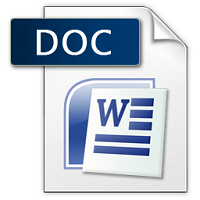₹198.00
Scroll down for Match your questions with Sample
Note- Students need to make Changes before uploading for Avoid similarity issue in turnitin.
Another Option
UNIQUE ASSIGNMENT
0-20% Similarity in turnitin
Price is 700 per assignment
Unique assignment buy via WhatsApp 8755555879
Description
SESSION August 2023
PROGRAM MASTER OF COMMERCE (M.COM.)
SEMESTER I
COURSE CODE & NAME DCM 6106-FINANCIAL ACCOUNTING & REPORTING
Assignment Set – 1
Questions
- From the following information, Prepare income statement and balance sheet of Sriram ltd. on 31st March 2021
Amount
Particulars Amount Particulars
Capital 207100 Cash atBank 26000
Drawing 7000 Salaries 8000
Plant &Machine 120000 Repairs 1900
Deliveryvehicle 26000 Opening Stock 16000
sundrydebtors 36000 Rent 4500
Manufacturing
Sundrycreditors 26000 Expenses 1500
Purchases 20000 BillsPayable 23500
Sales 42000 Bad debts 5000
Carriage
Wages 8000 Inwards 1600
Additional Information:
- Closing stock wasRs.16000
- Depreciate Plant & Machine @10% and Delivery vehicle@20%
- Unpaid rent amounted toRs.1000
Provision for Bad debt is to be made at 10%
Ans: To prepare the income statement and balance sheet for Sriram Ltd. as of March 31, 2021, let’s start with the income statement and then move on to the balance sheet.
Income Statement (for the year ended March 31, 2021):
———————————————————
Income Statement
Its Half solved only
Buy Complete from our online store
https://smuassignment.in/online-store/
MUJ Fully solved assignment available for session SEPT 2023.
Lowest price guarantee with quality.
Charges INR 198 only per assignment. For more information you can get via mail or Whats app also
Mail id is aapkieducation@gmail.com
Our website www.smuassignment.in
After mail, we will reply you instant or maximum
1 hour.
Otherwise you can also contact on our
whatsapp no 8791490301.
- Elaboratetheconceptualframeworkofaccountingasperqualitativecharacteristicsand justify its necessity ofadopting.
Ans:The conceptual framework of accounting provides a foundation for developing accounting standards and principles. It is a set of guidelines and concepts that form the basis for preparing and presenting financial statements. The conceptual framework is based on qualitative characteristics that financial
- a. State the principles and method of recognizing Investment in Associate and Joint Venture in consolidated FinancialStatements.
Ans:When preparing consolidated financial statements, the accounting treatment for investments in associates and joint ventures follows specific principles and methods. The principles are typically in line with the accounting standards such as International Financial Reporting Standards (IFRS) or Generally Accepted Accounting Principles (GAAP).
Below are the principles
Assignment Set -2
Questions
- a. List out reporting areas that may be relevant to a particular company or organization when considering matters related to Corporate Responsibility (CR) in financial reporting.
Ans:
Here is a list of reporting areas that may be relevant to a particular company or organization in the context of Corporate Responsibility:
Sustainability Reporting:
Environmental Performance: Reporting on the organization’s impact on the environment, including carbon emissions, energy consumptio
- Explain the difference between Impairment and Depreciation of Non -Current Assets.?
Ans: Let’s explore the key differences between impairment and depreciation:
- Nature of the Concepts: Depreciation:
Definition: Depreciation is the systematic allocation of the cost of a tangible fixed asset over its useful life.
Purpose: Depreciation is used to match the cost of the asset with the revenue it generates over time. It reflects
- Write short note on:
- Indian Accounting Standard.
- Integrated Reporting
- Impairment of Non-Current Assets
Elements of Revenue Account of Banking Company.
Ans:
- Indian Accounting Standard (Ind AS):
Indian Accounting Standards (Ind AS) are a set of accounting standards adopted by companies in India for the preparation and presentation of financial statements. Ind AS aligns with the International Financial Reporting Standards (IFRS), ensuring consistency and comparability of financial statements globally. The adoption of Ind AS was mandated by the Ministry of Corporate Affairs in India for certain classes of companies to enhance transparency, reliability,
- From the two Balance sheets of H ltd. And S Ltd. Prepare a consolidate balance sheet.
| Particulars | Note No. | H Ltd. | S Ltd. |
| I. Equity and Liabilities | |||
| 1) Shareholders Funds: | |||
| a) Share Capital- Equity share of Rs.10 each | 120000 | 30000 | |
| b) Reserves & Surplus- General Reserve | 25000 | 6000 | |
| Profit & Loss Account | 12000 | 9000 | |
| 2) Share Application Money pending allotment: | |||
| 3) Non-Current Liabilities: | |||
| 4) Current Liabilities: | |||
| a) Short-Term borrowings | |||
| b) Trade Payables- Creditors | 15000 | 5000 | |
| Total | 172000 | 50000 | |
| II. Assets: | |||
| 1) Non-Current Assets: | |||
| a) Fixed assets | |||
| i) Tangible assets | |||
| Building at Cost | 72000 | 25000 | |
| Plant & Machinery (Net) | 30000 | 10000 | |
| b) Non-Current Investments- 2000 Equity shares of S Ltd. of Rs.10 each | 25000 | ||
| 2. Current Assets: | |||
| a) Current Investments | |||
| b) Inventories- Stock | 18000 | 3000 | |
| c) Trade Receivables-Debtors | 22000 | 7000 | |
| d) cash & cash equivalents- Bank | 5000 | 5000 | |
| Total | 172000 | 50000 |
When H Ltd. Acquired 2000 shares in S Ltd., the latter company had reserves amounting to Rs.5000- none of which has been distributed since then.
Ans:
To prepare the consolidated balance sheet for H Ltd. and S Ltd., we need to consolidate the assets, liabilities, and equity of both companies, considering the investment in S Ltd. by H Ltd.
Let’s present the consolidated balance sheet:
———————————————————————–


